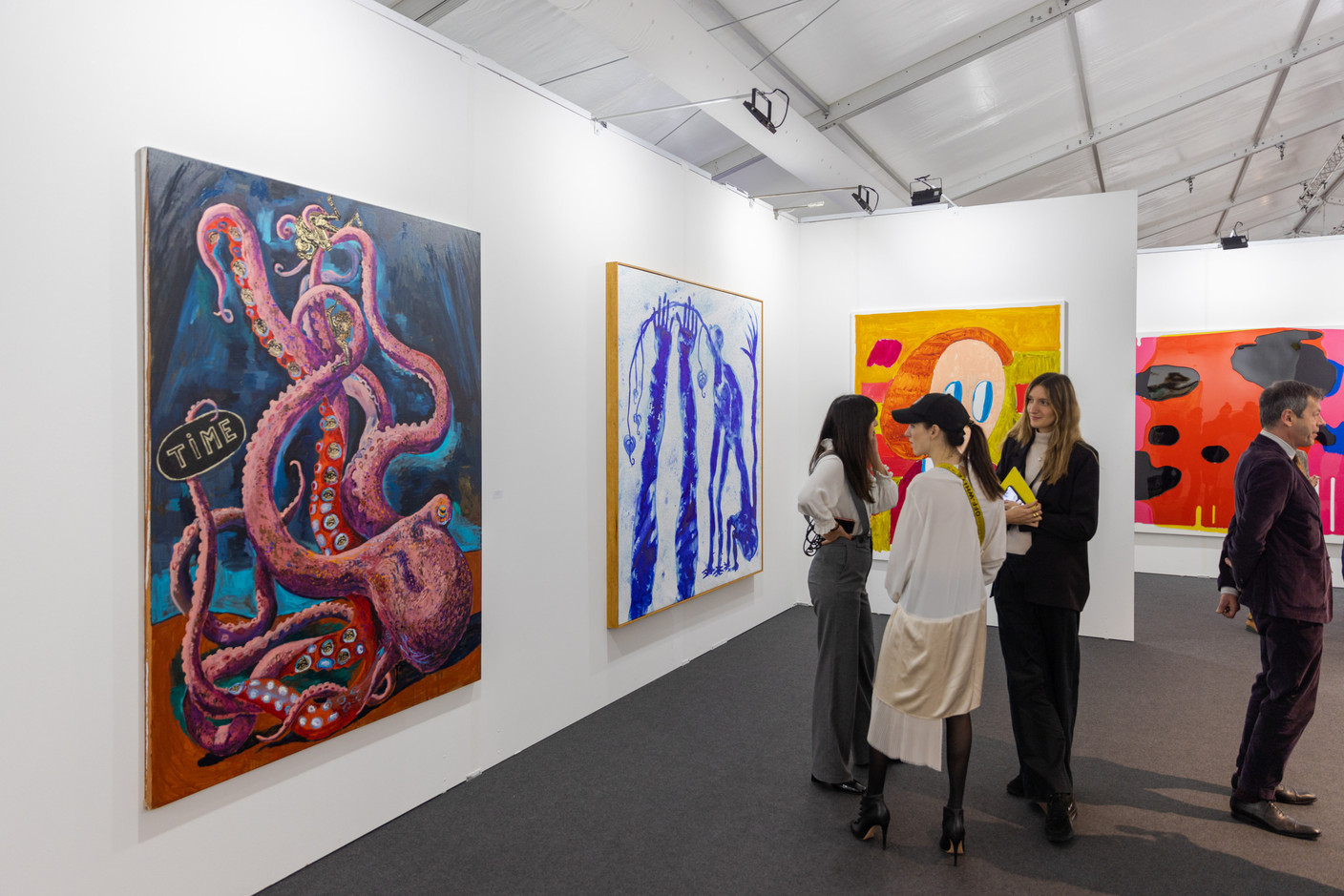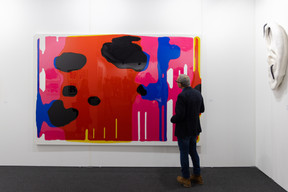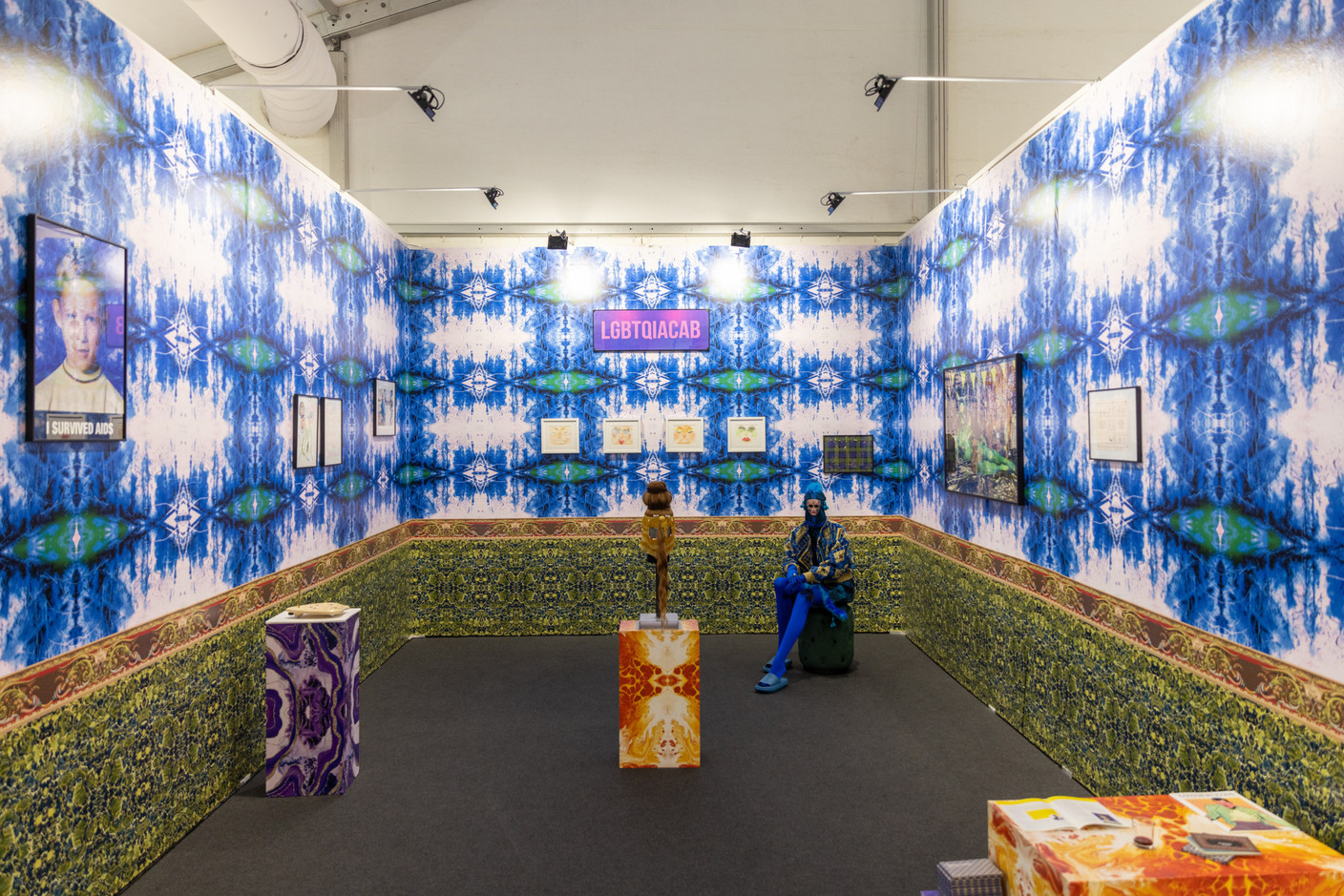Until Sunday evening, Luxembourg Art Week is being hosted on the Glacis and offers the public a chance to discover a quality contemporary art fair, as well as several related events. In order to make the most of these three days, here is a selection of stands and events that are not to be missed.
In the Main section
The Main section brings together the established galleries, mainly from the primary market, but also some galleries offering works from the secondary market. This is the largest section of the fair, with both local and international names represented.
Right at the entrance to the fair, you will immediately come across the stand of La Patinoire Royale/Galerie Valérie Bach (A05). For its participation in Luxembourg Art Week 2022, the works of Joana Vasconcelos (whose monumental work was presented outdoors last year) and the playful blown glass masks of Lucy + Jorge Orta are particularly noteworthy. Also of note is the neon drone by Renaud Auguste-Dormeuil, an artist who is interested in systems of social control and security in the public domain.
Continuing down the main aisle is the stand of Nosbaum Reding (B10), the gallery of, who initiated the fair. This year’s stand is particularly successful, with large-format works, including the large blue inks of Barthélemy Toguo. One thing is certain, Alex Reding is a loyal gallery owner, because year after year, the same artists are presented: Su-Mei Tse, Stephan Balkenol, Peter Zimmermann, Tina Gillen... At the same time, when you have a winning team, why change it?
Take the time to stop by the Galerie Bernard Bouche stand (B06) and admire the two works by Peter Joseph. This great British painter lived only for his art. These two paintings are from his last period and represent the skies that the artist saw from his studio in the South West of England. A powerful work, free and of great vitality.
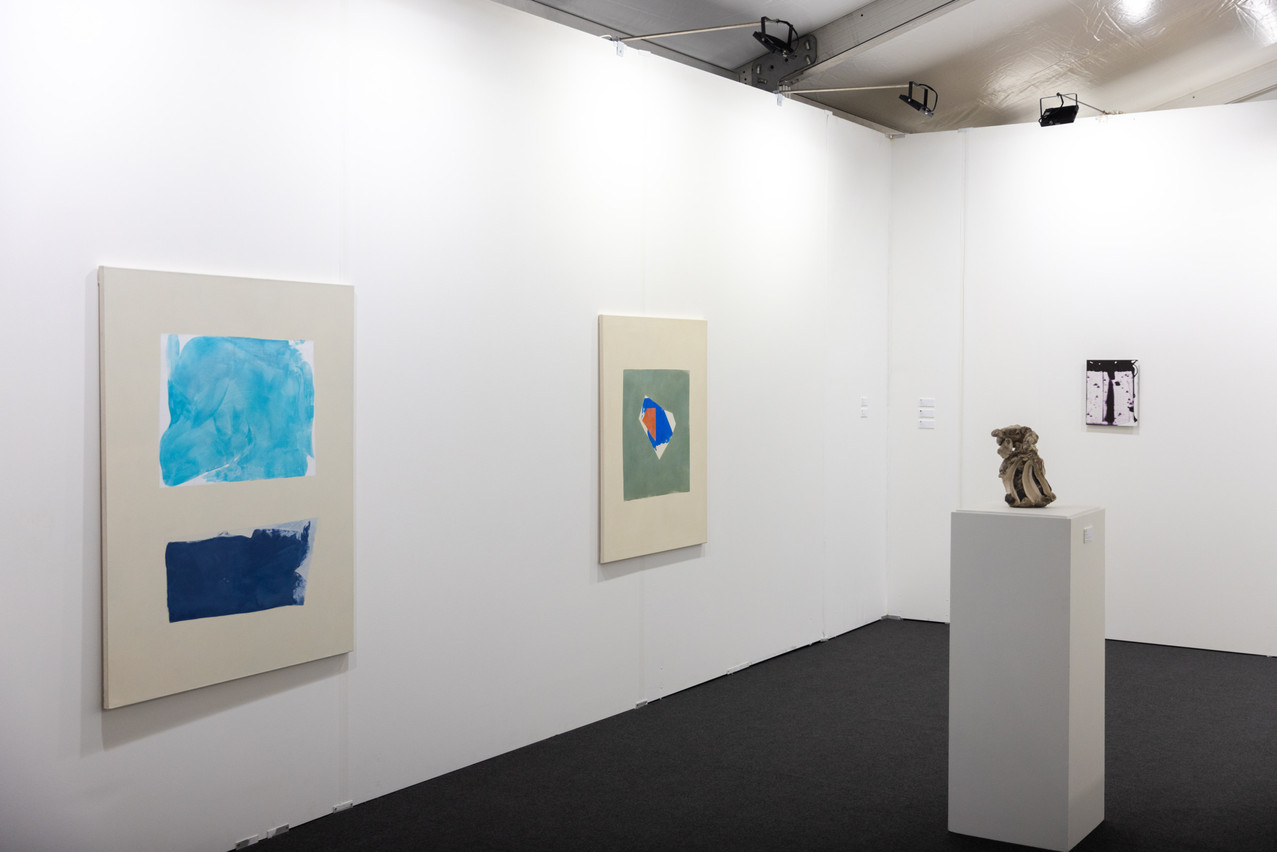
The Bernard Bouche gallery offers two works by Peter Joseph (left). (Photo: Romain Gamba/Maison Moderne)
On the outer aisle is the DYS gallery (C03), which is celebrating its 20th anniversary this year. For its third participation in Luxembourg Art Week, the gallery presents a dense stand, with an atmosphere oscillating between the baroque and the garden of Eden. We discover the rich tapestries of Krjst Studio, the result of a long process of graphic research, then created thanks to computerisation and an important work of manual addition, with a luxuriant rendering. In the same idea of richness and profusion, there are the sculptures of Benoit Huot, stuffed animals on which textiles, jewellery and other trimmings are added for an almost voodoo-like result. Finally, we should note the return of Étienne Potier’s incredible ceramics, already presented last year, with virtuoso enamels that are implemented in rich compositions with a rock’n’roll character and a touch of humour.
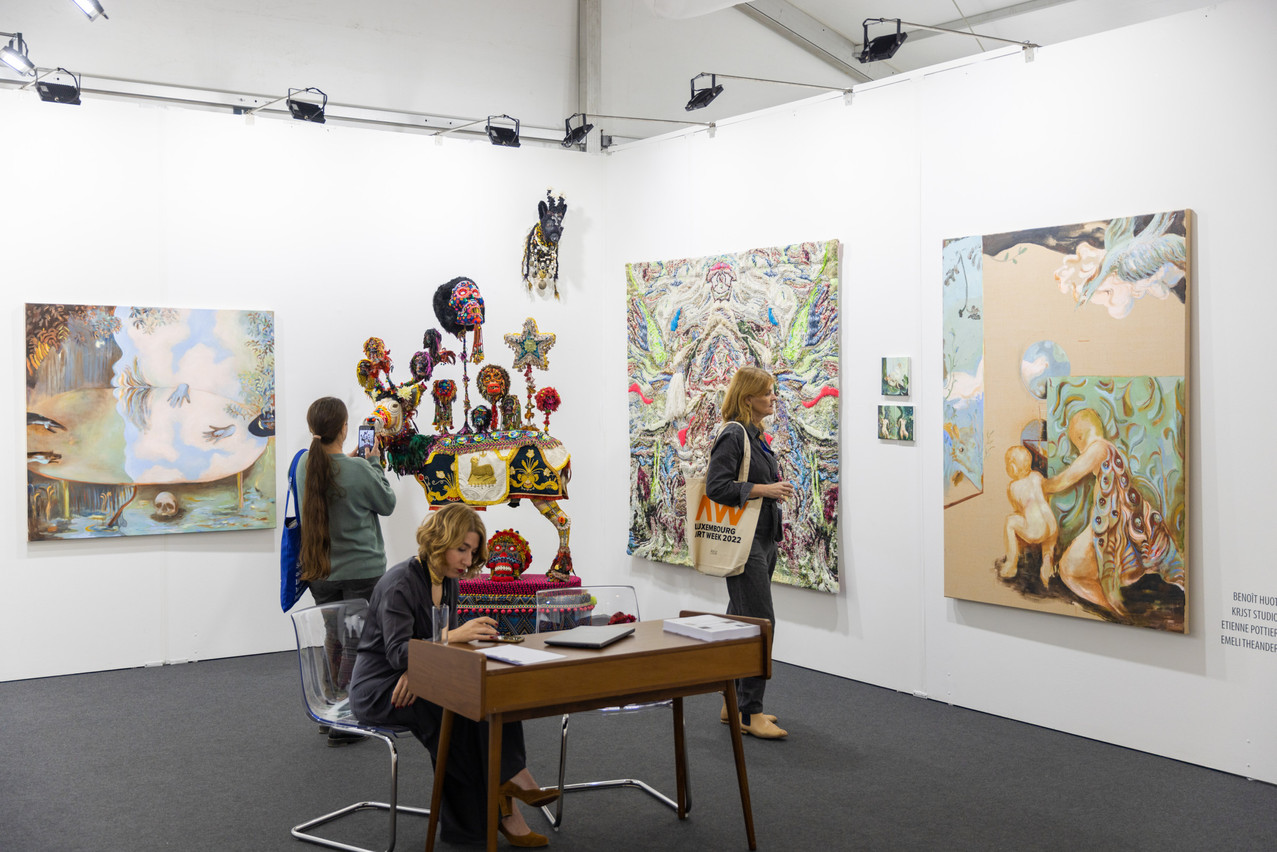
The DYS gallery stand is both baroque and lush. (Photo: Romain Gamba/Maison Moderne)
Further stops are necessary at the Nathalie Obadia gallery (B14), which is participating for the first time (with works by Shirley Jaffe, Laure Prouvost, Benoit Maire, Sophie Kuijken, etc.), at the Galerie Lelong & Co (B17) with a very masterful display (David Nash, Richard Serra, Fabienne Verdier, Jan Vos, Christine Safa, David Hockney...) and the Galerie Nadja Vilenne (B18) which presents the incredible photographic work of Aglaia Konrad.
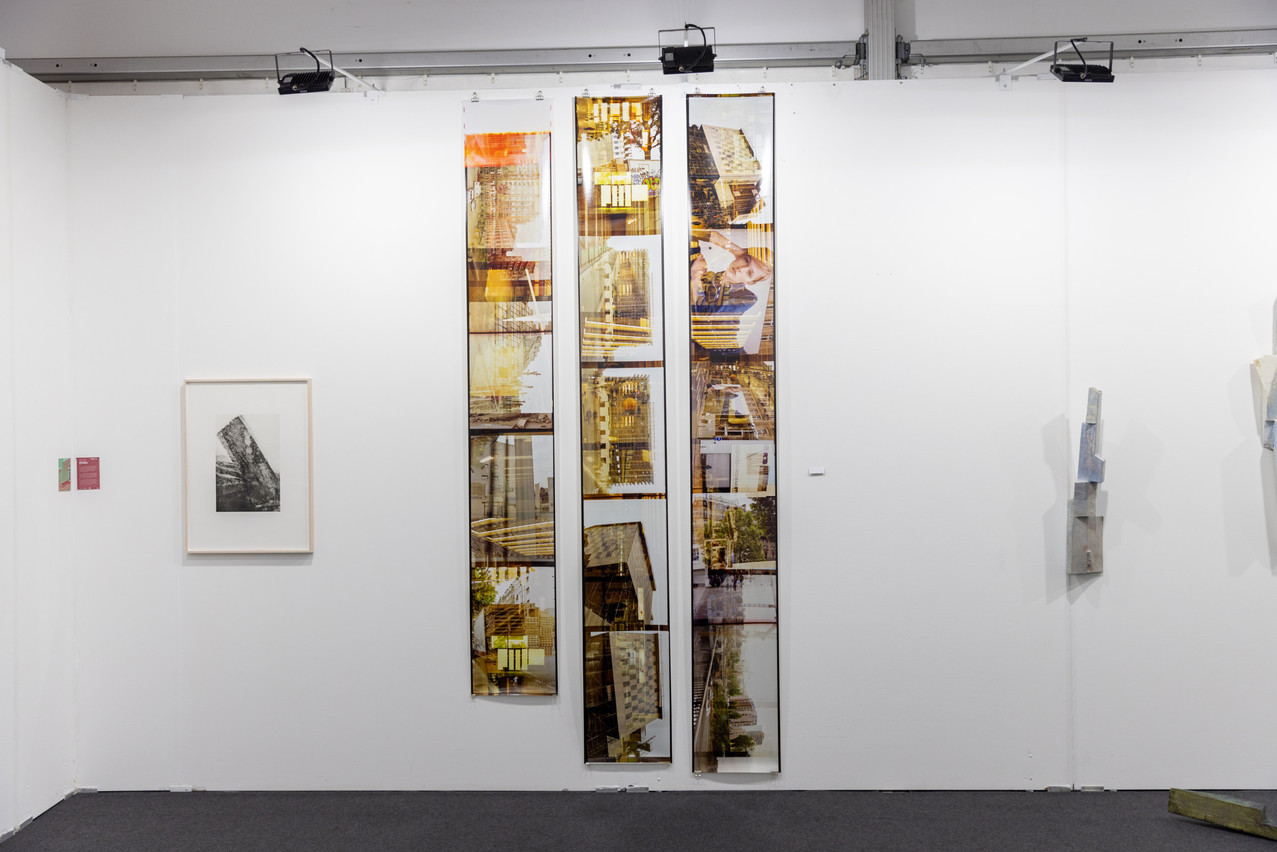
Aglaia Konrad’s work is presented at the stand of the Nadja Vilenne gallery. (Photo: Romain Gamba/Maison Moderne)
In the Take Off section
In this section, which is devoted to emerging galleries, it is advisable to stop by the stand of Lage Egal (D17) to discover the work of Ben Greber, who will be presented next year at the Konschthal Esch in a solo show. Recently, the artist spent time on the Rout Lëns to collect material and make prints that will be used in the future exhibition. He works on the transformation of memories: of his own memories and those of others. For Luxembourg Art Week, works made during the lockdown are presented.
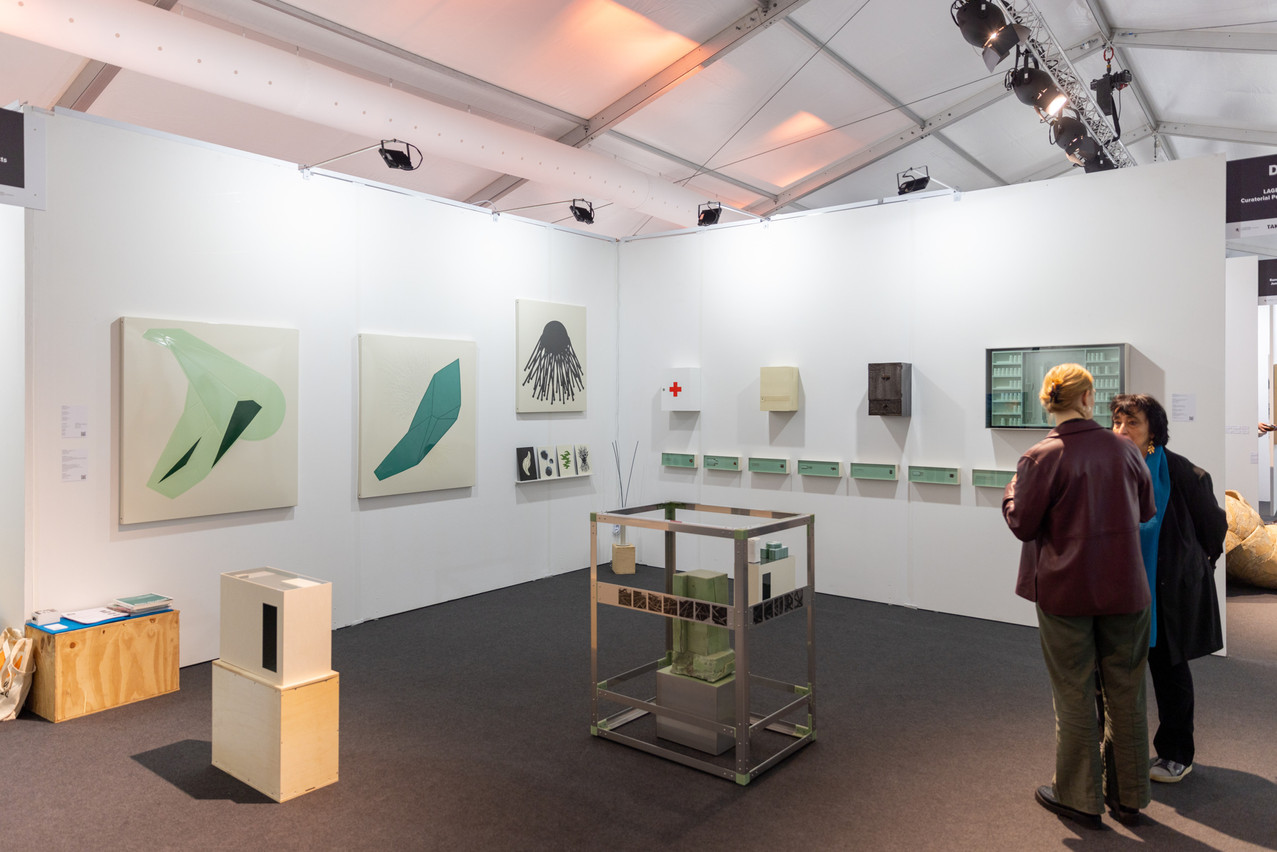
Ben Greber (works centre and right) will have a solo show at the Konschthal Esch next year. (Photo: Romain Gamba/Maison Moderne)
For the first time, Luxembourg Art Week has entrusted Parallel with a booth around NFTs (NFT Corner Booth). This technology allows the secure acquisition of digital artworks through the blockchain. The Parallel team is organising both an NFT transaction exchange for those who are already collectors or who wish to become collectors, and an exhibition space to discover what art productions are concerned by these new modes of transaction.
Visitors who are not yet familiar with this technology will be able to ask the Parallel team any questions they may have on this subject. It will also be possible to discover the “Autonomy” application, which acts as a wallet for the user, allowing them to centralise, consult and share their NFT collection, whatever the cryptocurrency used for the purchase. Moreover, thanks to a partnership with the Feral File platform, a generative art work mined on the blockchain will be specially created during the fair, and others will be able to be bought on this same platform, with, if necessary, the accompaniment of the Parallel team. Conferences on these themes are also .
Another specificity of this year: the stand of Balak (D21), a travelling structure which has the habit of carrying out specific art projects in the atypical places in which they take place (gymnasium, disused factory, flat...). On the occasion of Luxembourg Art Week, Balak#13 brings together works by artists from the LGBTQIA+ community They have also produced an LGBTQIA+ colouring book for the occasion and have initiated a collaboration with drag queens and kings.
An art trail in the city
Finally, the discovery also continues in the city. Aline Bouvy’s sculpture Enclosure (2021) is installed at the entrance to the fair’s pavilions. This metal structure depicts profiles of women wearing the “shrew's bridle,” a kind of muzzle used until the 16th century to publicly humiliate women who “talk too much.” Other works by Aline Bouvy are also installed in the large windows of Bazaar, which houses a reinterpretation of drawings inspired by a Berlin magazine whose drawings targeted the petty bourgeoisie of the early 20th century and criticised the rise of the Nazi regime.
The Schuman roundabout is home to Stijn Ank’s Phenix, whose creative process is documented in a video projected at the Amore.
Finally, on the terrace of Paname, two works from the MASS series by Charlotte Van der Borght, made from elements of the façade of a Parisian building from the 1970s, are installed, offering a new perspective on elements from industrial production and our everyday objects.
This story was first published in French on . It has been translated and edited for Delano.

